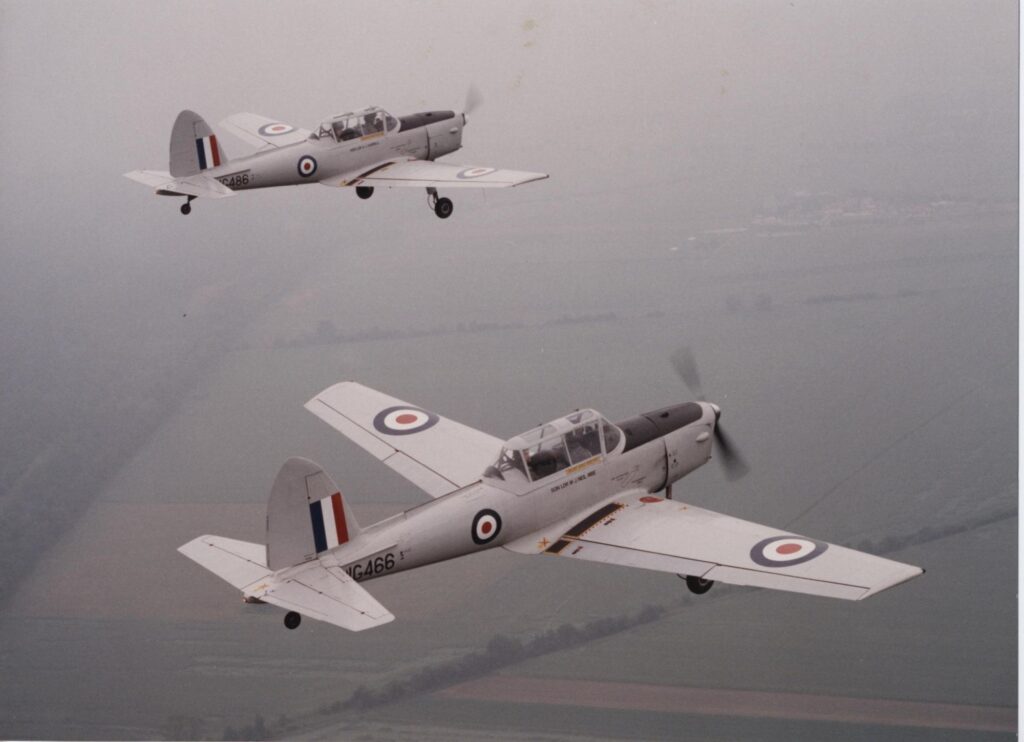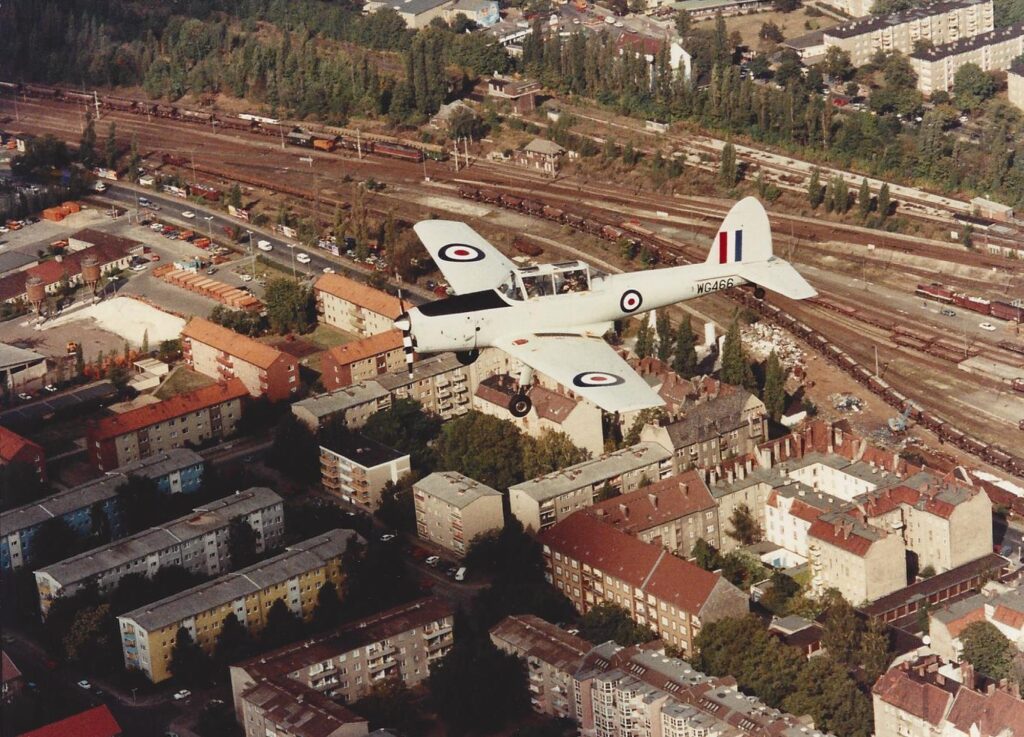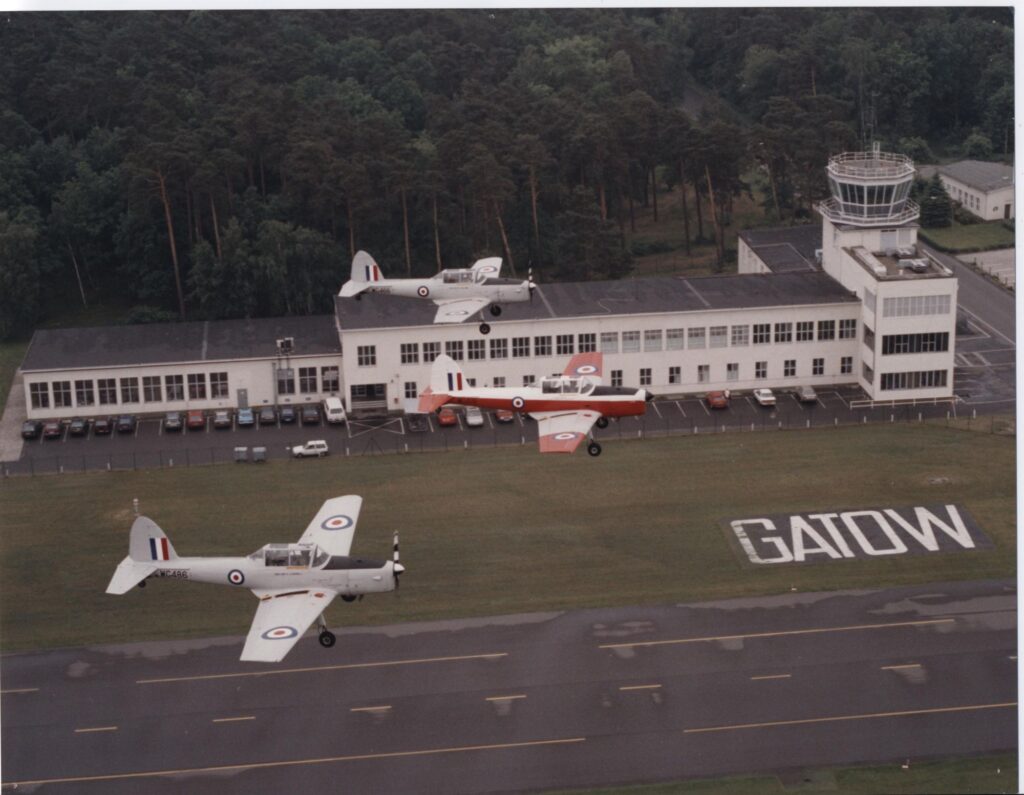
When the British Royal Air Force presented the Chipmunk WG 466 to the Allied Museum on July 29, 1994, this type of aircraft could look back on many years of service. The first Chipmunks were built in the late 1940s, and from the beginning they served as standard trainers for the British military. The RAF deployed 735 of these planes in all.
The Allied Museum’s Chipmunk WG 466 was manufactured by the British aircraft company de Havilland in 1954. It was stationed at the British air force base in Berlin’s Gatow district from 1987 to 1990 as one of two airplanes of this type deployed there.
An ideal plane for air reconnaissance in Berlin
The Berlin Control Zone’s airspace had a 32-kilometer radius. The aircraft of the four powers flew there from the end of World War II and the occupation of Berlin in 1945 until German unification in 1990. After the construction of the Wall in 1961 and the division of the four-powers city into East and West, the Western powers had a heightened need for aerial reconnaissance. The British deployed Chipmunks for this purpose.
They took off from RAF Gatow up to three times a week for surveillance and reconnaissance flights over East Berlin and parts of the GDR within the Berlin Control Zone. They flew over military installations and terrain used by the armed forces, for example to gain information about possible troop movements. A member of the British military liaison mission in Potsdam (BRIXMIS) photographed all installations and activities from the plane. The photos were then analyzed by BRIXMIS.
The Chipmunk WG 466 was shown to the public for the first time in 1994 as part of the exhibition “They’ll Always Have a Suitcase in Berlin.” The Allied Museum was still in the founding process at the time. The Chipmunk WG 466 was on display in the permanent exhibition from 1998 to 2001, after which it was dismantled and stored in the Museum’s depot. In 2012, the Bundeswehr Museum of Military History (MHM) in Gatow approached the Allied Museum and requested the aircraft on loan. From May 2014 on the Chipmunk will be part of the MHM’s permanent exhibition for several years, returning temporarily to the site of its former deployment.


